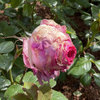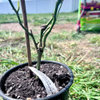Two-fold question: Help in Identifying Insect Plus Rose!
bonny46
13 years ago
Related Stories

MOST POPULAR8 Questions to Ask Yourself Before Meeting With Your Designer
Thinking in advance about how you use your space will get your first design consultation off to its best start
Full Story
DECLUTTERINGDownsizing Help: How to Edit Your Belongings
Learn what to take and what to toss if you're moving to a smaller home
Full Story
KITCHEN DESIGNKey Measurements to Help You Design Your Kitchen
Get the ideal kitchen setup by understanding spatial relationships, building dimensions and work zones
Full Story
GARDENING GUIDESWhat Kind of Roses Should You Grow?
Want to add the beauty of roses to your garden? Find out which ones, from old-fashioned to modern, are right for you
Full Story
WINTER GARDENINGPruning Secrets for Exquisite Roses
Encourage gorgeous blooms year after year with this time-tested advice on how to prune your rosebush in winter for health and shape
Full Story
GARDENING GUIDESSmall Carpenter Bees Are Looking for a Home in Your Plant Stems
Provide flowers and nesting sites in your garden for this beautiful, tiny, metallic blue wild bee — your plants will thank you
Full Story
FARM YOUR YARDHello, Honey: Beekeeping Anywhere for Fun, Food and Good Deeds
We need pollinators, and they increasingly need us too. Here, why and how to be a bee friend
Full Story
GARDENING GUIDES15 Native Flowers That Feed Native Bees
These perennials offer superfood to hundreds of bees and are gorgeous in their own right
Full Story
FALL GARDENING7 Reasons Not to Clean Up Your Fall Garden
Before you pluck and rake, consider wildlife, the health of your plants and your own right to relax
Full Story
GARDENING FOR BUTTERFLIESGardening for the Bees, and Why It’s a Good Thing
When you discover how hard bees work for our food supply, you may never garden without them in mind again
Full Story








Jeannie Cochell
greenhaven
Related Professionals
Windham Landscape Architects & Landscape Designers · Carson Landscape Architects & Landscape Designers · South Orange Landscape Architects & Landscape Designers · Suffern Landscape Architects & Landscape Designers · Walnut Landscape Architects & Landscape Designers · Braintree Landscape Contractors · Elmhurst Landscape Contractors · Forest Hills Landscape Contractors · Fuquay-Varina Landscape Contractors · Gallatin Landscape Contractors · Hendersonville Landscape Contractors · Rosemount Landscape Contractors · Shirley Landscape Contractors · The Villages Landscape Contractors · West Allis Landscape Contractorsbonny46Original Author
michaelg
york_rose
bonny46Original Author
york_rose